By Matt Wolfe
In the company’s 68 year history of building road cars, only six models have ever left a Ferrari factory equipped with a turbocharger. Previously reserved for high performance applications, turbocharging has become increasingly mainstream across numerous makes and models due to ever more stringent fuel economy requirements and the industry’s current trend towards engine downsizing. Ferrari has experimented with the technology intermittently throughout its history as a performance adder for road cars and for its motorsports interests. The arrival of the 488 GTB in February and the 488 Spider last month marked the first time Ferrari has utilized turbocharging on a mid-engine model since the last days of Enzo Ferrari. These are the ancestors to the latest forced induction Ferrari.
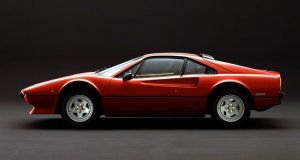
Based on the 308, the 208 Turbo was the first Ferrari road car to wear a “Turbo” badge. Giving the Turbo its name was a single KKK branded turbocharger that boosted the 2.0 liter V8’s output to 217 bhp, versus 153 bhp for the non-turbocharged version of the engine. The Turbo’s body was given additional air ducting for the engine, as well as a standard front air dam and roof aileron. Production of the 208 Turbo ran from 1982-1985, with over 650 built.
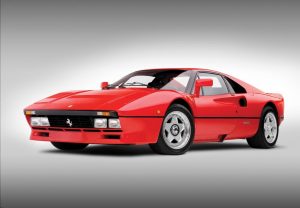
RKS 583
Built to meet the homologation requirements to compete in the World Rally Championship’s “Group B” class, the 288 GTO was essentially a racecar with turn signals. Its 400 hp twin-turbocharged & intercooled 2.8 liter V8 was capable of rocketing the car from 0-60 in less than 5 seconds and gave the GTO a top speed of 189 mph. Ferrari was able to produce the required 200 vehicles to homologate the car, but a deadly crash at the 1986 Tour de Corse resulted in the FIA’s termination of the Group B class, meaning none of the 272 GTO’s built would ever see a starting line.
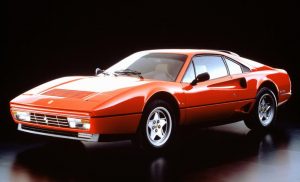
The 328 Turbo was an evolution of the 208 Turbo model that it replaced. Though still powered by a 2.0 liter V8, the 328 Turbo received technological advances, such as a water-cooled IHI turbocharger and an air-to-air intercooler, which increased power output to 251 bhp. Capable of achieving a top speed of over 150 mph, the Turbo’s performance could match or better the non-turbo versions of the 328. Ferrari produced 1136 328 Turbo’s from 1986-1989.
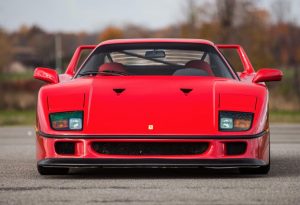
Built and named for the company’s 40th anniversary, the F40 was the culmination of Ferrari’s continued development of turbocharged engines and the final car to be personally approved by Enzo Ferrari. The F40 was the most powerful car Ferrari had ever sold to the public. Fed by a pair of IHI turbochargers, the F40’s 3.8 liter V8 produced 478 bhp and could launch the car from 0-60 in less than 4 seconds. 100 mph could come as fast as 7.5 seconds and the F40 had a top speed of over 200 mph. 1,311 F40s were manufactured between 1987 and 1996.
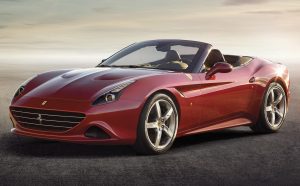
After a nearly 30 year hiatus of building any turbocharged models, Ferrari introduced a twin-turbocharged V8 engine in the 2014 California in as part of a model update. The California T symbolized many firsts for Ferrari; it was the first front-engine Ferrari to ever receive a turbocharged engine, it was the first convertible model Ferrari had ever turbocharged, and was the first turbo Ferrari to produce more than 500 bhp. The California T’s 3.9 liter V8 produces 552 bhp is capable of accelerating the car from 0-60 in 3.6 seconds with a top speed of 196 mph.
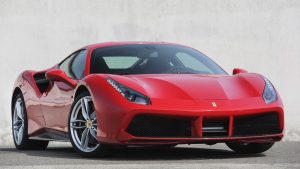
The 488 is the latest in the lineage of turbocharged Ferrari’s and represents and intersection of resemblances to “Turbo” models from Ferrari’s past. Though the 488 is the first mid-engine Ferrari to be turbocharged since the F40, the 488’s mission is closer to that of a 328 Turbo successor. Just as the 328 did, the 488 replaces an outdated model (the 458), but unlike the 328, the turbocharged engine is the sole engine available in the 488, whereas the Turbo 328 was a separate model. Like its ancestors, the 488 is more powerful than any turbo model that preceded it, with a twin-turbo 3.9 liter V8 engine producing a staggering 661 hp and a top speed of 205 mph.